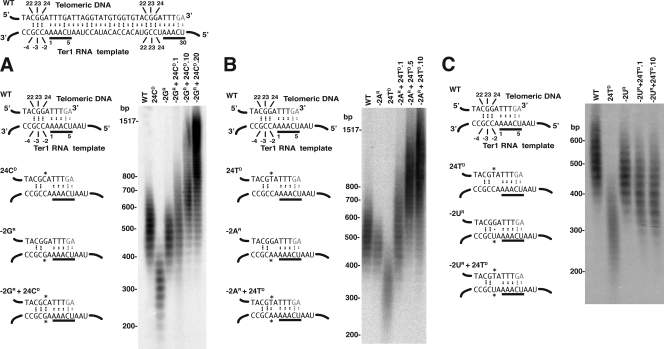FIG. 4.
The short-telomere phenotypes caused by mutations at position 24 of the Ter1 template are suppressed by mutations at −2 that are predicted to restore base pairing with the telomeric repeat. (A) The 24CD and −2GR mutations. The left panel shows the predicted base pairing between the telomeric DNA end and the Ter1 template in the 24CD and −2GR mutations alone or in combination. On top is shown the complete template sequence and its predicted pairing to telomeric sequences for the wild type. The lower diagrams show only the left part of this sequence for the mutants indicated. Dots between bases indicate hydrogen bonds. Asterisks indicate mutant bases. Bases underlined in black are the 3′ 5-nt repeat of the template. The right panel shows a Southern blot of BsrBI-digested genome DNA from the same strains probed with a telomeric repeat sequence. The double mutant is shown 1, 10, and 20 streaks after its creation. (B) The 24TD and −2AR mutations. Predicted base-pairing interactions and a Southern blot are shown, as in panel A. The double mutant is shown 1, 5, and 10 streaks after its creation. (C) The 24TD and −2UR mutations. Predicted base-pairing interactions and a Southern blot are shown, as in panel A. The double mutant is shown 1 and 10 streaks after its creation. WT, wild type.

